Generating a Mnemonic
Krux supports creating 12 and 24-word BIP39 mnemonic seed phrases using random bits, also known as entropy. Generating true entropy is challenging, especially for an embedded device, so we recommend outsourcing entropy generation using dice rolls. However, it is also possible to randomly pick words (e.g., SeedPicker) or use the camera as a source of entropy to quickly create a mnemonic.
At the start screen, select New Mnemonic, and choose between camera, words, rolls of a D6 (standard six-sided die), or a D20 (20-sided die).
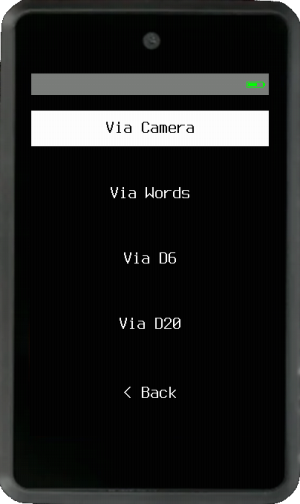
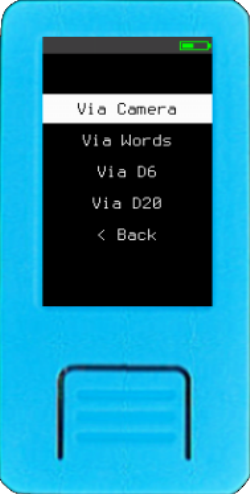
Camera¶
(Experimental!) Choose between 12, 24 words or double mnemonic, then take a random picture and Krux will generate a mnemonic from the hash of the image bytes.
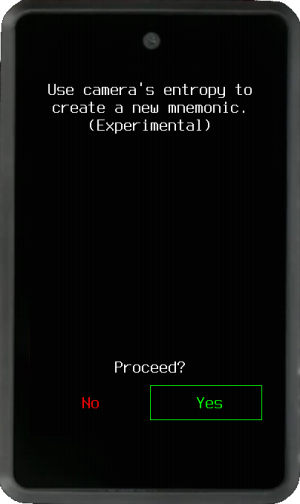
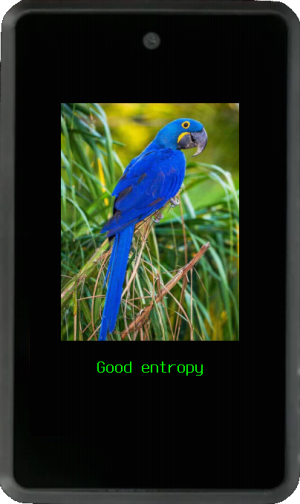
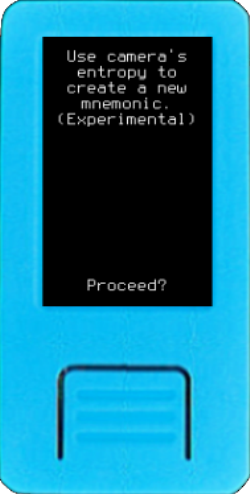
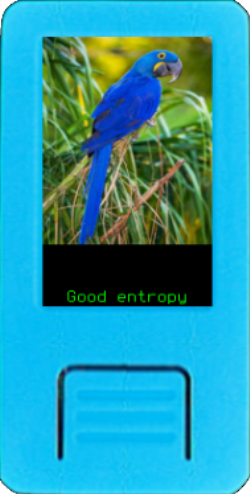
Image Entropy Quality Estimation¶
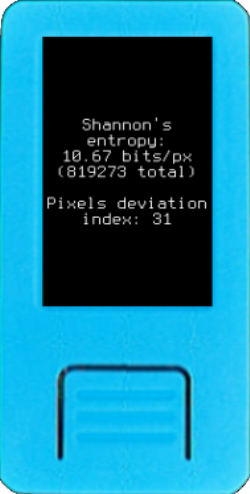
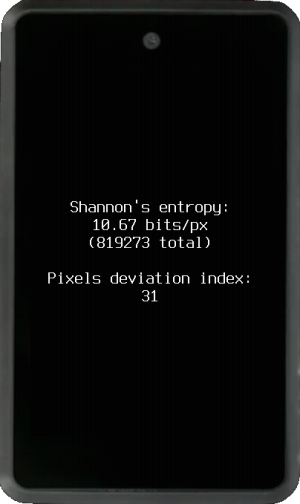
During image capture, entropy quality estimation is displayed to assist you in obtaining a quality image source for your key. After the snapshot is taken, Shannon's entropy and pixel deviation indices are presented. Minimum thresholds are established to prevent the use of poor-quality images with low entropy for key generation.
Note: These values serve only as indicators or estimations of the quality of entropy, but are not absolute values of entropy in a cryptographic context.
Double mnemonic¶
It is the combination of two 12-word mnemonics that also forms a valid 24-word BIP39 mnemonic. This is achieved by using the first 16 bytes (128 bits) of the image's entropy to generate the first 12-word, then using the next 16 bytes to generate the second 12-word and checking if these two 12-word together forms a valid 24-word, if not, we iterate over the second 12-word incrementing its entropy bytes until the two 12-word forms a valid 24-word.
Double Mnemonic was first defined by Stepan Snigirev in his Double Mnemonic Generator. It can be used for plausible deniability, or, as Stepan stated, to have fun and confuse everyone.
Words¶
Print the BIP39 word list in 3D or on paper, then cut out the words and place them in a bucket. Manually draw 11 or 23 words from the bucket. For the final word, Krux will assist you in picking a valid 12th or 24th word by adjusting its smart keypad to only allow typing words with a valid checksum. Alternatively, you can leave it empty, and Krux will select a final, valid checksum word for you.
Dice Rolls¶
Via D6¶
Choose between 12 or 24 words. The entropy in a single roll of a D6 is 2.585 bits ( log2(6) ); therefore a minimum of 50 rolls is required for 128 bits of entropy, enough to generate a 12-word mnemonic. For 24 words, a minimum of 99 rolls is required for 256 bits of entropy.
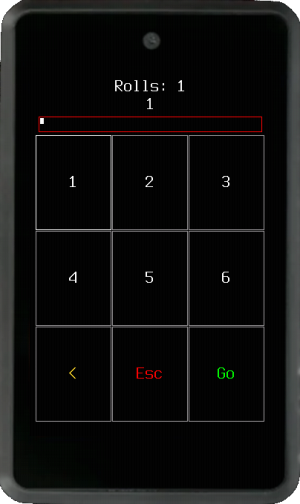
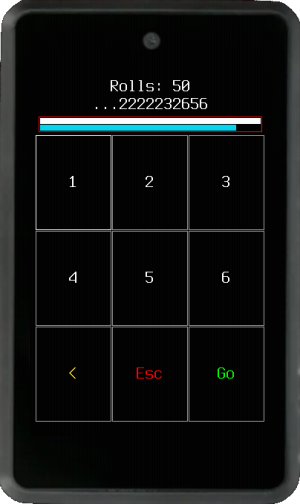
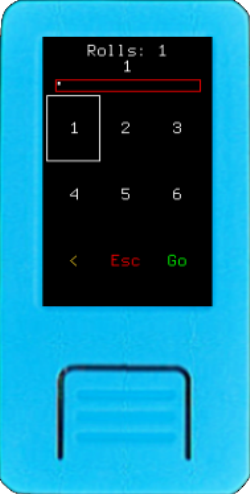
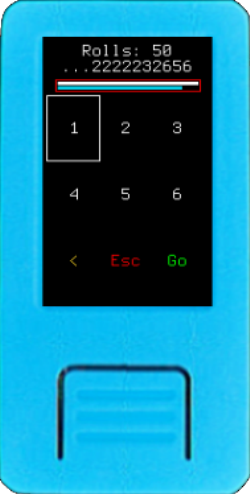
Via D20¶
The entropy in a single roll of a D20 is 4.322 bits ( log2(20) ); therefore a minimum of 30 rolls is required to generate a 12-word mnemonic and 60 rolls to generate a 24-word mnemonic.
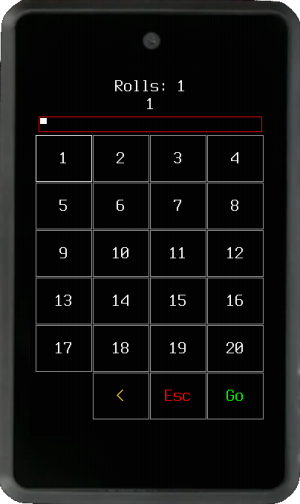
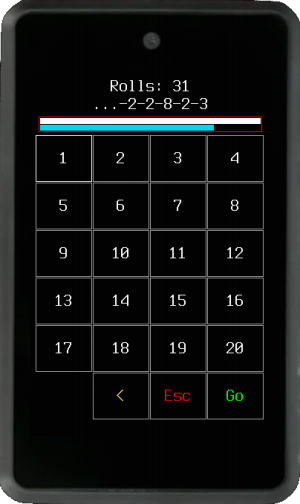
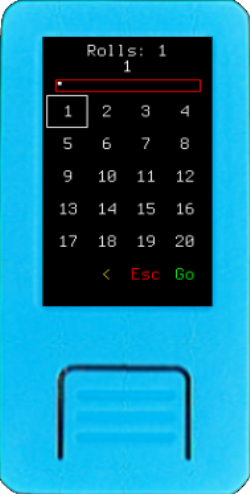
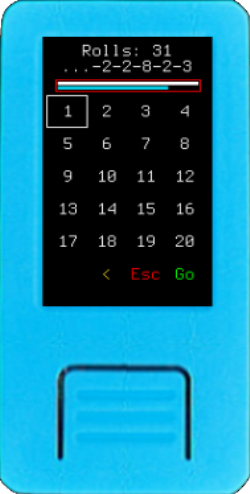
Dice Rolls Entropy Quality Estimation¶
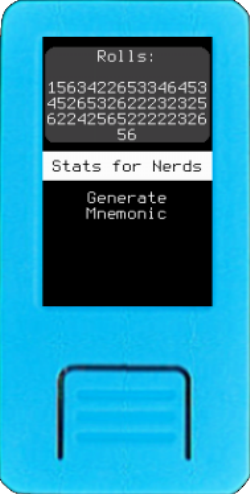
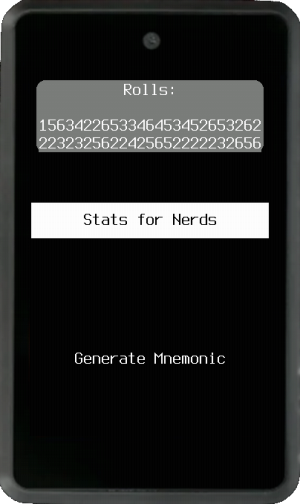
As you enter your dice rolls, you'll see two progress bars fill up. The top progress bar shows how many rolls you've entered compared to the minimum required. The bottom progress bar shows the real-time calculated Shannon's entropy compared to the minimum required (128 bits for 12 words and 256 bits for 24 words). When the Shannon's entropy estimation reaches the recommended level, the progress bar will be full, and its frame will change color. If you've reached the minimum number of rolls but the entropy estimation is still below the recommended level, a warning will appear suggesting that you add more rolls to increase the entropy.
Note: Similar to image entropy quality estimation, dice rolls Shannon's entropy serves as an indicator and should not be considered an absolute measure of cryptographic entropy.
Learn more about Krux Entropy Quality Estimation.
Stats for Nerds¶
A low Shannon's entropy value could suggest that your dice are biased or that there's a problem with how you're gathering entropy. To investigate further, examine the "Stats for Nerds" section to check the distribution of your rolls and look for any abnormalities.
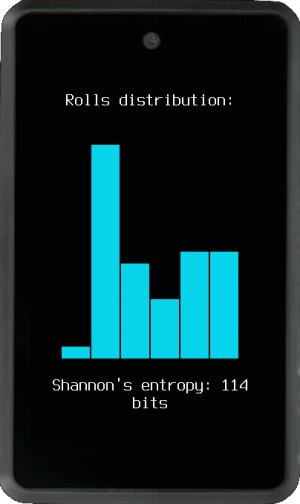
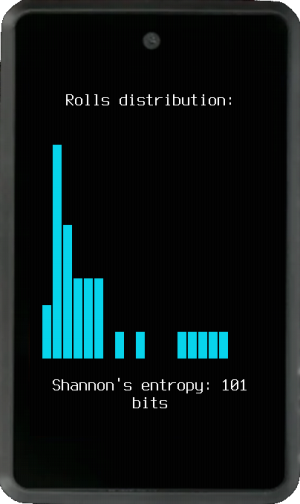
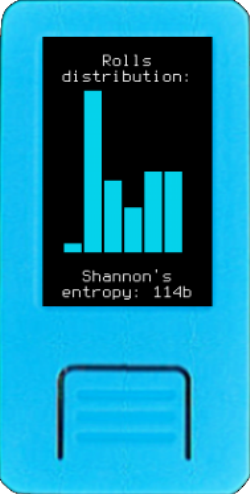
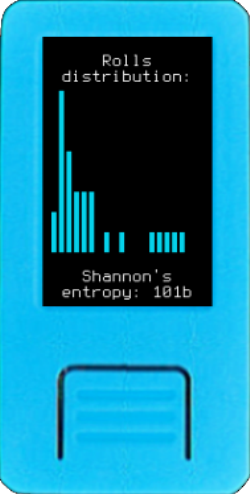
(Optional) Edit Mnemonic¶
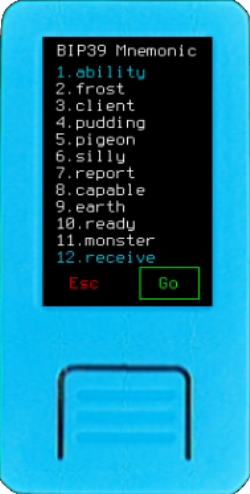
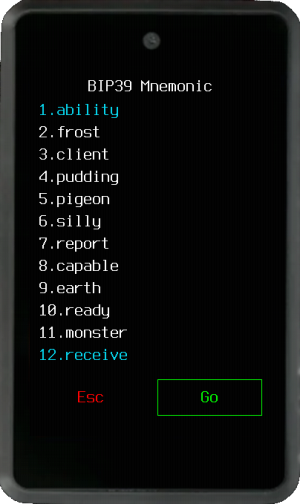
After sufficient entropy is given, you can manually add custom entropy by editing some of the words. Simply touch or navigate to the word you want to change and replace it. Edited words will be highlighted, and the final word will automatically update to ensure a valid checksum. However, proceed with caution, modifying words can negatively impact the natural entropy previously captured.
On the next screen, you will be loading a wallet. You can read more about this in Loading a Mnemonic -> Confirm Wallet Attributes.
How Entropy Works in Krux¶
For dice rolls, Krux keeps track of every roll you enter and displays the cumulative string of outcomes after each roll.
When you have entered your final roll, Krux will hash this string using SHA256 and output the resulting hash to the screen so that you can verify it for yourself.
In case a camera snapshot is used as a source, the image bytes, which contain pixels data in RGB565 format, will be hashed in the same way as the dice rolls.
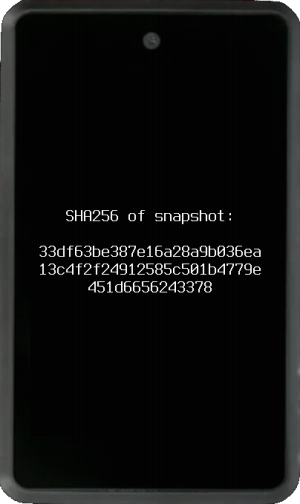
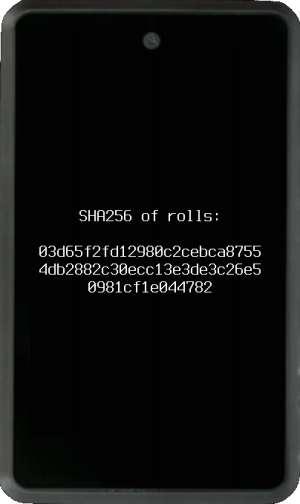
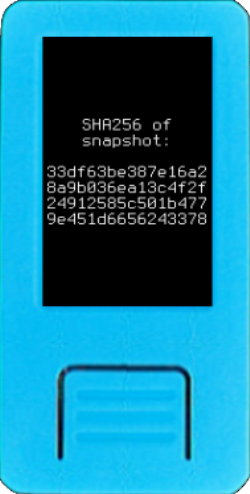
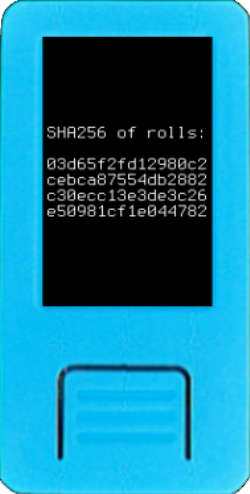
Krux then takes this hash, runs unhexlify on it to encode it as bytes, and deterministically converts it into a mnemonic according to the BIP39 Reference Implementation.
Note: For 12-word mnemonics, only the first half of the SHA256 hash is used (128 bits), while 24-word mnemonics use the full hash (256 bits).
How to Verify¶
Don't trust, verify. We encourage you not to trust any claim you cannot verify yourself. Therefore, there are wallets that use compatible algorithms to calculate the entropy derived from dice rolls. You can use the SeedSigner or Coldcard hardware wallets, or even the Bitcoiner Guide website, they share the same logic that Krux uses and will give the same mnemonic for the dice roll method.